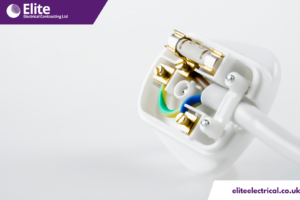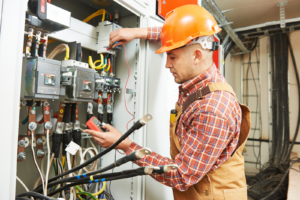Understanding UK Electrical Plug Wire Colours
Understanding electrical wire colours is crucial for anyone involved in electrical work, whether they are professionals or DIY enthusiasts. In the UK, the colour coding of wires is not just a matter of convention; it is a fundamental aspect of electrical safety and compliance with regulations. Incorrect wiring can lead to dangerous situations, including electric shocks, fires, and equipment damage. Therefore, being well-versed in the current wiring standards is essential for ensuring safe installations and maintenance.
This article aims to provide a comprehensive guide on UK electrical plug wire colours, tracing their historical evolution and highlighting the importance of adhering to modern standards. By understanding the significance of these colour codes, individuals can better navigate the complexities of electrical systems and contribute to safer environments.
Historical Overview of Electrical Wiring Standards in the UK
The journey of electrical wiring colours in the UK reflects a broader narrative of evolving safety standards and technological advancements. Historically, wiring colour codes were not standardised, leading to confusion and potential hazards. The introduction of formal regulations was prompted by increasing incidents related to electrical installations.

Evolution from Old Wiring Colour Standards to New Harmonised Standards
Before 1977, the UK predominantly used a different colour scheme: red for live wires, black for neutral wires, and green for earth wires. This system was functional but lacked consistency with international standards. As electrical installations became more complex and interconnected with European markets, the need for a harmonised approach became evident.
In 2004, significant changes were made to align UK wiring colours with European standards, particularly those set by the International Electrotechnical Commission (IEC). The live wire colour changed from red to brown, the neutral wire from black to blue, while the earth wire retained its green/yellow combination. This transition was not merely cosmetic; it represented a commitment to enhancing safety and consistency across electrical systems in the UK and Europe.
Comparison of Old Wiring Colours (Red, Black, Green) Versus New Colours (Brown, Blue, Green/Yellow)
Old Colour | New Colour | Function |
Red | Brown | Live |
Black | Blue | Neutral |
Green | Green/Yellow | Earth |
The shift to new wiring colours has been crucial in reducing confusion during installations and maintenance. The harmonisation with European standards also facilitates safer practices when dealing with imported appliances or equipment that may follow different colour codes.
Implications of Using Old Wiring Colours in Modern Installations
Using old wiring colours in contemporary installations poses significant risks. Electricians and DIYers may inadvertently misidentify wires, leading to incorrect connections that can result in malfunctions or hazards. Moreover, properties with outdated wiring systems may not comply with current safety regulations, which can have legal implications for homeowners and contractors alike.
Importance of Identifying Old Wiring in Renovations or Property Purchases
For anyone renovating an older property or purchasing a home, understanding whether old wiring colours are present is vital. Identifying outdated wiring can help prevent potential safety hazards and ensure compliance with current regulations. Homeowners should consider having their electrical systems inspected by qualified professionals to assess any risks associated with old wiring practices.
Current UK Electrical Plug Wire Colours
In the UK, electrical plug wiring follows a specific colour code to ensure safety and functionality. Understanding these colours is essential for anyone working with electrical systems, as they indicate the role of each wire within a circuit.
Brown Wire (Live)
The brown wire is designated as the live wire in UK electrical systems. Its primary function is to carry electrical current from the power source to the appliance. This wire is crucial for the operation of any electrical device, as it provides the necessary energy for functionality.
Importance in Electrical Circuits: The live wire poses a significant risk if not handled properly, as it carries voltage that can lead to electric shock or fire hazards. Therefore, it is vital to treat this wire with caution during installation and maintenance.
Blue Wire (Neutral)
The blue wire serves as the neutral wire, which completes the electrical circuit by providing a return path for the current back to the power source.
Role in Completing the Electrical Circuit: The neutral wire plays a critical role in ensuring that appliances operate safely and efficiently. It helps balance the electrical load and prevents potential overloading of circuits. Properly connecting the blue wire ensures that electricity can flow correctly and safely through devices.
Green/Yellow Wire (Earth)
The green/yellow striped wire is known as the earth wire. It serves as a safety measure by providing a pathway for electrical faults to be directed safely into the ground.
Significance for Safety and Protection Against Electric Shocks: The earth wire is essential for preventing electric shocks and protecting both users and appliances from faults in the electrical system. In case of a fault, such as insulation failure, the earth wire directs excess current away from users, significantly reducing the risk of injury or damage.
Black/Grey Wire (Switched Live)
In some applications, particularly with lighting circuits, you may encounter black or grey wires used as switched live wires. These wires are used to control power to devices from switches.
Usage in Specific Appliances or Circuits: Switched live wires allow for control over when an appliance receives power, such as turning lights on and off. Understanding their function is crucial when working with lighting circuits or any system where control switches are involved.
Importance of Correct Plug Wiring
Proper plug wiring is not merely about aesthetics; it has profound implications for safety and compliance with regulations.
Safety Implications of Proper Wiring
Incorrect wiring can lead to severe consequences, including electric shocks, appliance damage, and even fires. Ensuring that each wire is connected according to its designated function is critical for maintaining a safe environment.
Compliance with Current Regulations (BS 7671)
Adhering to British Standard 7671 (BS 7671) is mandatory for all electrical installations in the UK. This standard outlines safety requirements for electrical systems and ensures that installations are safe for use. Non-compliance can result in legal repercussions and increased risks of accidents.
Common Mistakes to Avoid When Wiring Plugs
- Incorrect Wire Connections: Mixing up live and neutral wires can lead to dangerous situations.
- Poor Insulation: Failing to secure connections properly can expose wires, leading to short circuits.
- Neglecting Earth Connections: Not connecting the earth wire can increase shock risks.
- Using Incorrect Tools: Not using appropriate tools can lead to improper installations.

Practical Application
Knowing how to correctly wire a UK plug is an invaluable skill that enhances safety and functionality.
Step-by-Step Guide on How to Wire a UK Plug Correctly
- Preparing Wires
- Cut back the outer sheath of the cable carefully to expose approximately 6mm of each coloured wire.
- Ensure you have enough length to work with while avoiding excessive exposure of bare wires.
- Connecting Wires to Terminals
- Connect the brown (live) wire to the terminal marked ‘L’.
- Connect the blue (neutral) wire to the terminal marked ‘N’.
- Connect the green/yellow (earth) wire to the terminal marked with an earth symbol (⏚).
- Ensure all connections are tight and secure.
- Sealing the Plug Safely
- Once all wires are connected correctly, close the plug casing.
- Ensure that no bare wires are exposed outside of their terminals.
Tools Required for Wiring a Plug
- Screwdriver (flathead and Phillips)
- Wire cutters/strippers
- Voltage tester (to ensure power is off before beginning work)
Safety Measures and Best Practices
- Always disconnect power before starting any electrical work.
- Use insulated tools where possible.
- Double-check all connections before sealing plugs.
- If unsure about any aspect of wiring, consult a qualified electrician.
By following these guidelines, individuals can ensure safe and effective wiring of plugs in accordance with UK standards, enhancing both safety and functionality in their electrical systems.

Electrical Appliance Safety Tests
Overview of PAT Testing and Its Significance
Portable Appliance Testing (PAT) is a crucial procedure designed to ensure the safety and functionality of electrical appliances, particularly in workplaces and public environments. PAT testing involves a combination of visual inspections and electrical tests to identify potential hazards associated with portable appliances. The primary aim is to prevent electrical accidents, such as shocks and fires, which can result from faulty equipment.
Regular PAT testing is not just a regulatory formality; it is an essential practice that helps organisations comply with health and safety regulations, thereby protecting employees, customers, and the general public. By identifying faults before they lead to serious incidents, PAT testing plays a vital role in maintaining a safe working environment.
Recommendations for Ensuring Safe Practices
- Conduct Regular PAT Testing: Establish a schedule for regular testing based on the type of equipment and its usage. High-risk environments may require more frequent testing.
- Employ Competent Personnel: Ensure that only trained professionals conduct PAT testing. This guarantees that the tests are carried out correctly and that any identified issues are addressed promptly.
- Visual Inspections: Encourage staff to perform routine visual checks on appliances before use. Look for signs of wear, damage, or overheating, which can indicate potential hazards.
- Keep Records: Maintain thorough records of all PAT tests conducted, including dates, results, and any necessary repairs. This documentation is essential for compliance and can also help in identifying patterns or recurring issues.
- Educate Staff: Provide training for employees on the importance of electrical safety and how to recognise faulty appliances. Empowering staff with knowledge can significantly reduce risks.
- Use Quality Equipment: Invest in high-quality appliances that meet safety standards. Cheaper alternatives may not have the same level of safety features, increasing the risk of failure.
- Immediate Action on Failures: If an appliance fails a PAT test, it should be taken out of service immediately until it has been repaired and retested. Prompt action can prevent accidents and ensure compliance with safety regulations.
Conclusion
Understanding electrical wire colours is fundamental for ensuring safety and compliance in any electrical installation or maintenance work. Knowledge of current wiring standards not only helps prevent accidents but also ensures adherence to legal requirements such as BS 7671.
As this guide has illustrated, proper wiring practices are essential for the safe operation of electrical appliances. Additionally, regular PAT testing serves as a proactive measure to identify potential hazards before they escalate into serious incidents.
Power Up Your Safety with Elite Electrical
At Elite Electrical Contracting, we pride ourselves on delivering high-quality electrical services across London and the surrounding areas. Based in Surrey, we have established ourselves as a reliable and reputable company with a proven track record in the commercial electrical contracting sector.
With over 20 years of experience, our dedicated team is committed to providing bespoke and innovative electrical solutions tailored to your business needs. We understand that every project is unique, and our client-focused approach ensures that we deliver exceptional results while maintaining the highest safety standards.
If you’re looking for expert guidance on electrical installations, maintenance, or safety testing, look no further. Our team is here to help you navigate the complexities of electrical work with confidence and expertise.
Contact Elite Electrical today to discuss your requirements and discover how we can assist you in creating a safe and efficient electrical environment for your business!
Contact Us:
- Address: 30 Upper Mulgrave Road, Sutton, Surrey, SM2 7BD
- Phone: 020 8644 3200
- Email: [email protected]







